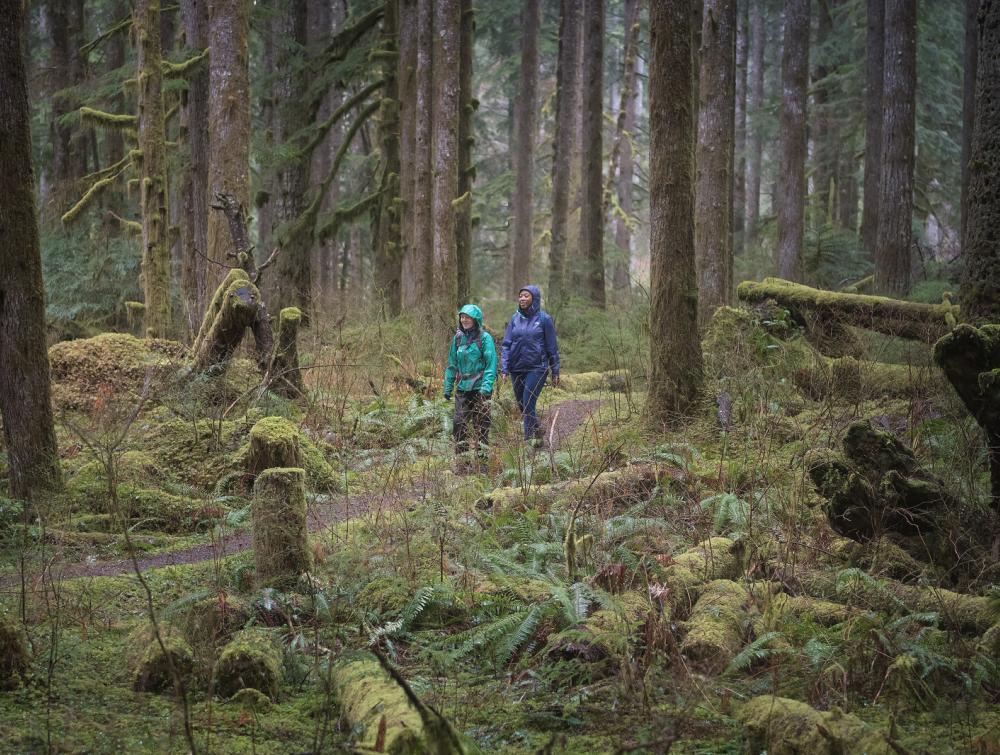Forest FAQs

Walking in Alpine Lakes Wilderness, WA
Mason Cummings, The Wilderness Society
Find out more about our nation’s forests in these National Forest FAQs.
Q: How many national forests are there?
A: There are 154 national forests and 20 national grasslands. These lands total 193 million acres.
Q: Who manages our national forests?
A: All are managed by the U.S. Forest Service, which is part of the United States Department of Agriculture.
Q: Why are roads such a problem for national forests?
A: There are more than 380,000 miles of roads in our national forests and grasslands—that’s eight times more than the U.S. interstate highway system. Leftover from bygone logging years, many of these roads are no longer in use. This massive road system is causing serious environmental problems including polluting the streams that provide communities with clean drinking water and destroying the breeding and feeding grounds for wildlife.
Q: How can we protect national forests?
A: There are several ways to protect our national forests:
- National forests can be protected by the U.S. Congress through legislation.
- At the national level, the U.S. Forest Service can issue laws called “rules” or “regulations” that dictate how our forests are to be managed.
- There is also an opportunity to protect our forests at the local level. Local Forest Service staff are constantly planning and making decisions about the kinds of activities that occur in national forests (e.g., building trails, reclaiming old roads, building new roads, allowing a logging project). The Forest Service is required to involve the public in these decisions.
Each of us has the power to influence these projects and planning efforts to ensure our forests are protected.
Q: What is a roadless area, and why are they so special?
A: A roadless area is just that: a forest area without roads. Today, the United States currently enjoys 58.5 million acres of roadless forests. These roadless areas on our national forests provide America with clean drinking water, incredible backcountry experiences and great habitat for a wonderful variety of plants and animals.
Q: I am always hearing about watersheds. Why are they important and how do they relate to national forests?
A: A watershed is a connected system of rivers and streams in an area. Managing our national forests using a watershed’s boundary is smart because it helps ensure that our streams are protected. Water is one of the most important natural resources flowing from forests.
Our national forests provide the largest single source of water in the U.S., with about one-fifth originating from 193 million acres of land.
In fact, 66 million people rely on a national forest as their source for drinking water.
Q: What is forest planning and why is it important?
A: Every one of the 193 million acres of national forests is special and unique. How you manage a forest in New Hampshire is very different than how you manage one in New Mexico. Each national forest goes through forest planning and this process results in the development of a land management plan, otherwise known as a forest plan.
A forest plan provides direction to the Forest Service about how the agency is to manage all of the resources on a particular national forest. The plan addresses managing outdoor recreation, designating areas as wilderness, protecting endangered species and deciding where logging, mining and drilling for natural gas can occur. Whenever the Forest Service begins the process of developing a land management plan for a forest or grassland, the stakes are high: protection versus development.
Q: How much funding do our national forests receive?
A: Congress appropriated $4.6 billion to the Forest Service for fiscal year 2012. This may seem like a lot, but the truth is our national forests are very underfunded. Properly managing, protecting and restoring 193 million acres of national forest requires an investment.
It takes a lot of resources to do the job right. If we adequately invest in our national forests, we get fresh drinking water, cleaner air and opportunities for outdoor recreation in return.
